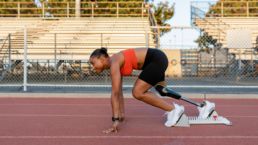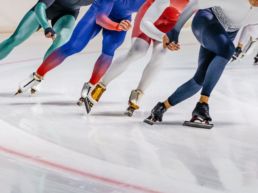Following record-breaking social media engagement at the Paris 2024 Olympics, all eyes shifted toward the Paralympics. Would the competition follow the successful social media strategy of the Olympics or chart its own path?
The answer was the latter: a surprising and bold divergence. The Paralympics, in a move that sparked curiosity and debate, adopted a humorous, meme-driven approach, setting itself apart from the more traditional strategies of sporting events.
This unconventional strategy was labelled cutting-edge by some and downright offensive by others. In this piece, I explore the controversy and ask whether other sports rightsholders might adopt a similar approach.
A Controversial Shift
While memes became a central part of the discourse around the Olympic Games, this happened naturally during the competition and – crucially – did not originate from official Olympic accounts. It became clear in the lead-up to the Paralympics that social media feeds would be notably different from their Olympic counterparts.
Instead of pushing conventional content, Paralympic accounts took a different option, especially on platforms like TikTok and Instagram. This playful content, often using humour to highlight the unique challenges faced by Paralympians, received mixed reactions.
Some saw the comedic angle as refreshing, helping demystify athlete experiences and engage younger audiences. To others, it was verging on the disrespectful. Is humour an appropriate way to address the very real challenges of these athletes?
The debate touched on a broader question, too. As Paralympians seek genuine recognition for their achievements, does the use of humour enhance our understanding of the event or is it ultimately counterproductive?
The Case for Humour
Although controversial, the Paralympic strategy was undeniably successful. Its TikTok account (4.7 million followers, over 1 billion views) outperformed all its other social media accounts. Combined. Content not only generated engagement but also increased awareness of the Paralympics in general.
As Craig Spence, Chief Brand and Communications Officer of the International Paralympic Committee, remarked, “So many people are now commenting, ‘I didn’t know about Paralympic sports, but I’m going to watch the Games now.’” Underlining his support for the new social media style, he stated, “If you speak to Paralympians, they’ve got a great sense of humour. They don’t want to be wrapped in cotton wool or protected from society.”
Lighthearted content resonated with audiences by making athletes more relatable and helping break down barriers between them and the public. It avoided the archetypal “inspiration porn” narrative often surrounding athletes with a disability, which many argue perpetuates harmful stereotypes. Instead, as Paralympian Richard Fox explained, the goal was to show athlete authenticity, using viral trends and humour to make the Games more accessible.
The Case Against
The new approach was not universally welcomed. As the Olympics didn’t adopt a humorous tone on social media, did the Paralympic strategy open an unnecessary divide between the two competitions? Some athletes and fans were concerned that humour could undermine the image of the Paralympics, potentially diminishing respect and emphasising that there are Paralympians who don’t want to be the subject of any narrative other than that of commitment to their craft and competition.
US Paralympian Brenna Huckaby was among those critical of the content, calling it “condescending” and “disrespectful”. Her supporters argued that while humour might have attracted large audiences, the perceived engagement-baiting risked sending the wrong message about the Paralympics and offending the wider disabled community, positioning the athletes as subjects of fun rather than respect. Perhaps humorous content would set back rather than help the Paralympic movement?
@jessicaemilyquinn Have you seen it? How do we feel about it? #paralympics #disabilitytiktok #disabilityawareness ♬ original sound - Jess Quinn
A Strategic Pivot
The Paralympics changed its social media strategy over the course of the Games to a more orthodox, skill-focused narrative as TikTok and Instagram posts began to place the spotlight on an athlete’s ability and achievements. This change in tone reflected a recognition that there is a time and place for lightheartedness as well as demonstrating the strategic flexibility of the Paralympic social media team.
This pivot provides a key lesson for other sports rights holders: social media strategies evolve in line with changing events and audience needs. Humour built engagement and captured attention pre-Games, laying the foundation for the subsequent shift to content that celebrated incredible athlete feats during competition. It primed the audience so that athlete performances were front and centre when they mattered most.
Key Takeaways for Sports Rightsholders
The Paralympic social media strategy offers valuable lessons for other sports organisations.
- Tailor content to specific platform – TikTok is an ideal space for humour and memes; Instagram balances this with serious content. A multi-platform strategy ensures that content appeals to different audiences.
- Use humour as a tool for engagement – It can be a powerful way to raise awareness and break down barriers. It’s essential, however, to balance this with respect, especially when dealing with serious subject matters like disability in sports.
- Adapt strategy based on context – Content published pre-event can be more playful to generate buzz and engage casual audiences. During the event, a shift to content that highlights athlete dedication and talent will probably yield better results.
- Listen to the athletes – Ensuring they are on board with your social media strategy is crucial as is the importance of ongoing dialogue.
Conclusion
The Paralympic social media strategy of using memes and humour to drive engagement has been both successful and divisive. With millions of views and followers, this approach undoubtedly grabbed attention and boosted awareness, especially among younger audiences.
However, it also raised important questions about how humour should be used in sports marketing, particularly in relation to athletes with a disability.





